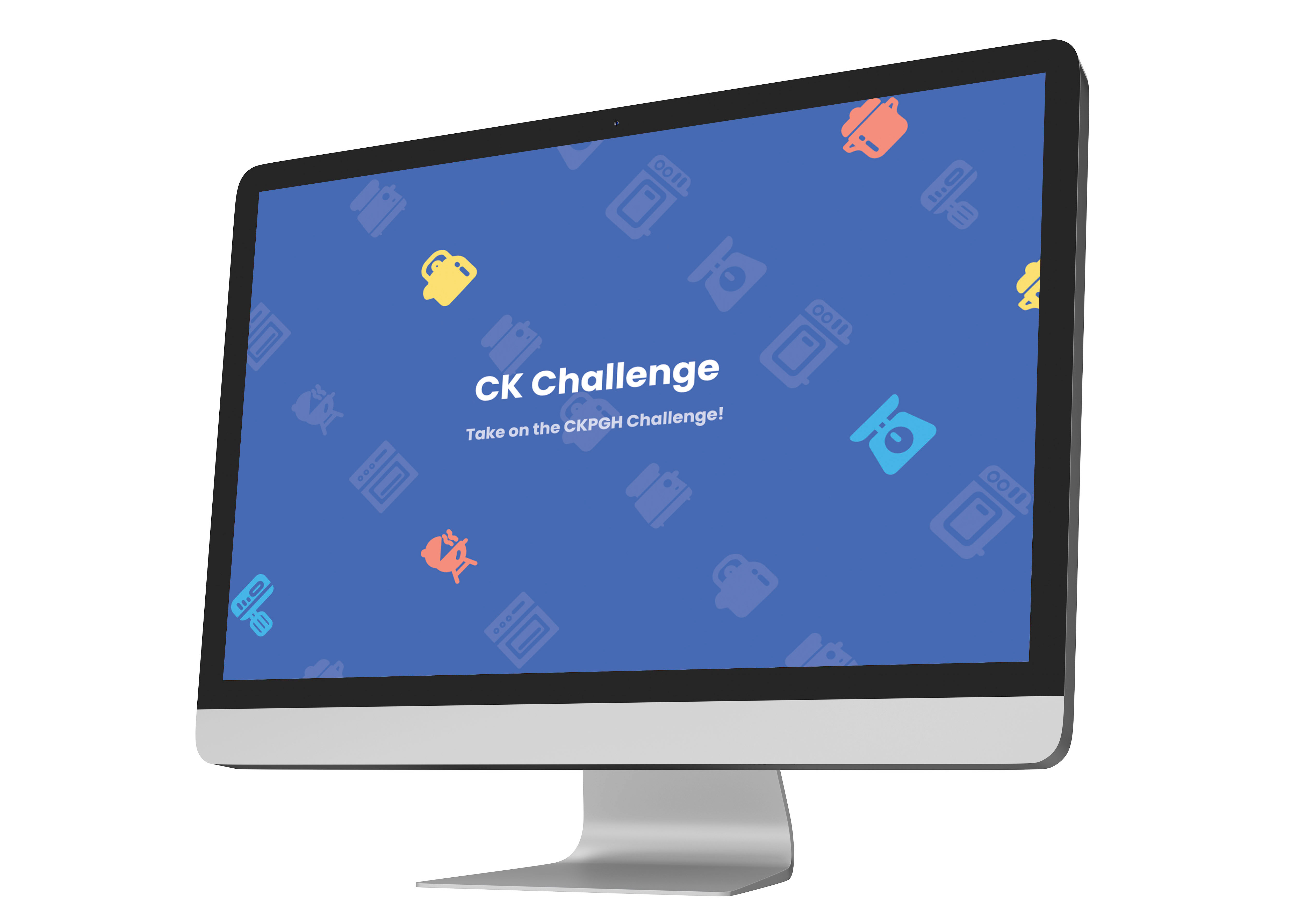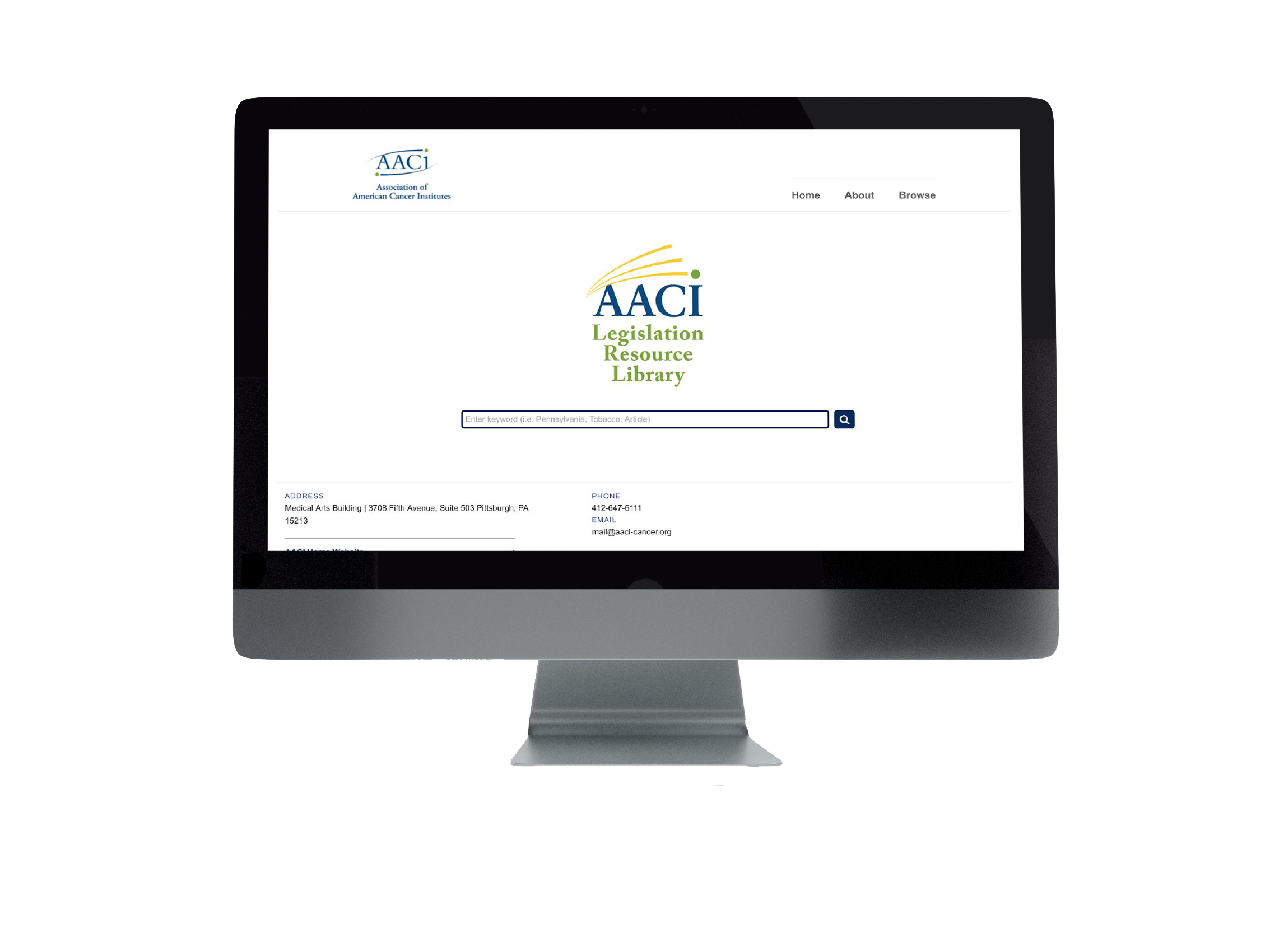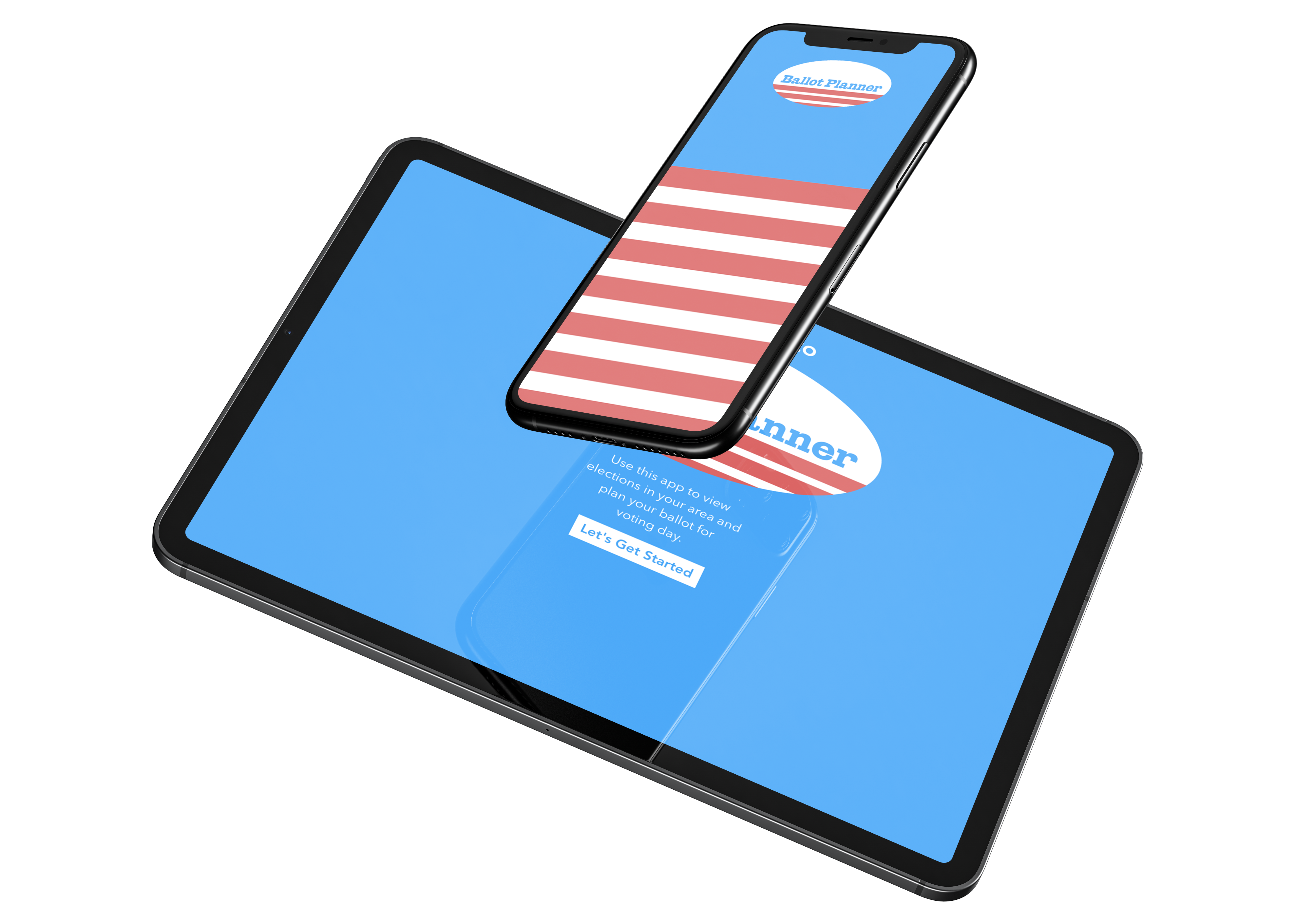In our User Centered Research Course, the Graduate Student Assembly (GSA) requested that we conduct research in order to design a solution to better the transportation system at Carnegie Mellon. Through various research methods and user testing, we designed a weather kiosk system to be used to aid students in their journeys to and from campus.
Research
Current State
Carnegie Mellon. School of amazing programs, from tech (shoutout to IS and HCI!) to the humanities to the arts. It’s well known for fostering an innovative environment with talented students from all different walks of life. It is NOT, however, known for transportation.
Carnegie Mellon students have access to the Pittsburgh Public Transportation System, which many students utilize, but it isn’t always the best choice for travel, especially with inclement weather
Pittsburgh doesn’t always have ideal weather conditions. This past winter of 2019 during the infamous Polar Vortex, students set up a petition to cancel school because CMU insisted students take Ubers rather than walk, which frustrated many people who lived farther off campus.
Another issue was that students either didn’t know or didn’t care about the CMU shuttle system, which is heavily funded by the transportation segment of the university.
There were a lot of potential focus areas to look at. So we decided to start scoping down with a focus area.
Focus Area
We designed a focus area using reverse assumptions
“why is it so hard to get information as students about CMU transportation options?”
In this stage of our research , we had a hypothesis that students didn’t receive information about transportation options at CMU.
This was indeed a messy domain to work with, so we started with some general research on the stakeholders to see what relationships we could find.
Stakeholders
From the map, it was clear to see that the center of the map was the university student. Parents, school administrators, and the students themselves want to be safe and happy. So we chose to focus on the student as our user to research.
Other takeaways from the stakeholder map:
-There's a lot of competition for transportation from services such as Uber.
-Students regularly interact with elements outside of the CMU bubble, like other residents of Pittsburgh.
Contextual Interviews
Once we determined our end user, we split up interviews to be with students that lived either close to campus (< 1 mile) or farther (>=1 mile).
We felt that this was a fair way to get a large range of students because a trend at the university was that underclassmen stayed closer to campus, whereas upperclassmen and grad students lived off campus for the lower rent.
We conducted 4 contextual interviews, where we followed our interviewee to see how they left campus to go home. We especially focused on how they received information on their transportation sources, and their emotions when interacting with the environment.
After the interviews, we met for an interpretation session, and found some general themes from these interviews, as well as previous contextual interviews we had completed earlier that semester for the course. We took all of the notes from the session and then began the affinitization process to see if these interviews had any similarities.
a sample of interpretation notes
Affinitization
Affinitizing was a piece of cake (just kidding, but we did find out some cool stuff)! Here we confirmed many trends that we saw during the interviews:
-weather affects what transportation the student takes so checking weather is a common theme for students when going to a location
- many receive information from either well known apps, such as Google Maps, or through word of mouth while at school, meaning that students will not go out of their way to receive information.
- That being said, people WILL actively look for this type of information at critical periods, such as moving to a new apartment.
So what now?. We wanted to get a view at the bigger picture about this, so we created a survey to get a larger quantity of data.
Survey
We designed this survey keeping the following points in mind:
We wanted to:
-Learn about the factors that contribute to students’ choice to use a particular transportation service
-Understand the different needs/concerns for students on-campus vs. off-campus living
-Determine the most important resources for information dissemination on transportation
We found out things like:
-Students mostly hear about info from mobile apps and word of mouth.
-The bus and walking were the most popular methods of transportation.
-The cost of a service is extremely important, along with safety and convenience.
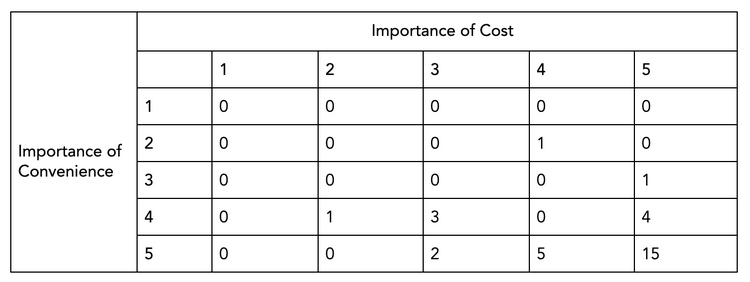

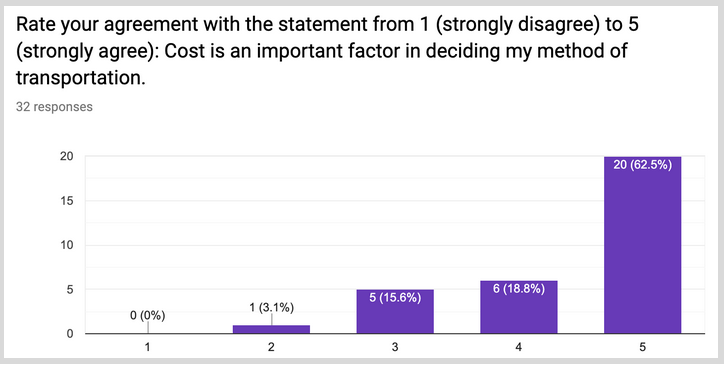
Wall Walk & Reframing
At this point we had a lot of data and research, so we decided to take step back and so a wall walk to look at everything we had done and define user needs to keep in mind when moving forward. Among these needs, we wanted to make sure out solution would be:
-free.
-convenient to use.
-compatible with walking or taking the bus.
Design
Our course had no restrictions on what we could design so we started with some BIG ideas to meet our user needs. We thought of things like a “Glass dome around CMU to mitigate the effects of Pittsburgh weather”, free bikes for students (similar to what Google does now), information billboards, and so on. Now that we had ideas, it was time to test them.
Storyboarding + Speed Dating
We took our ideas, and organized them by making a title page with the user need, the lead question, discussion points when talking to users. We showed out ideas to users and got some feedback. We then voted on our favorite ideas, and a kiosk to dispense umbrellas for students won! Here were some quotes we received about the idea:
“I’m usually prepared, but this would be good if there’s unexpected weather or my umbrella breaks”
“Umbrellas make my backpack heavy, it would be nice to have a kiosk”
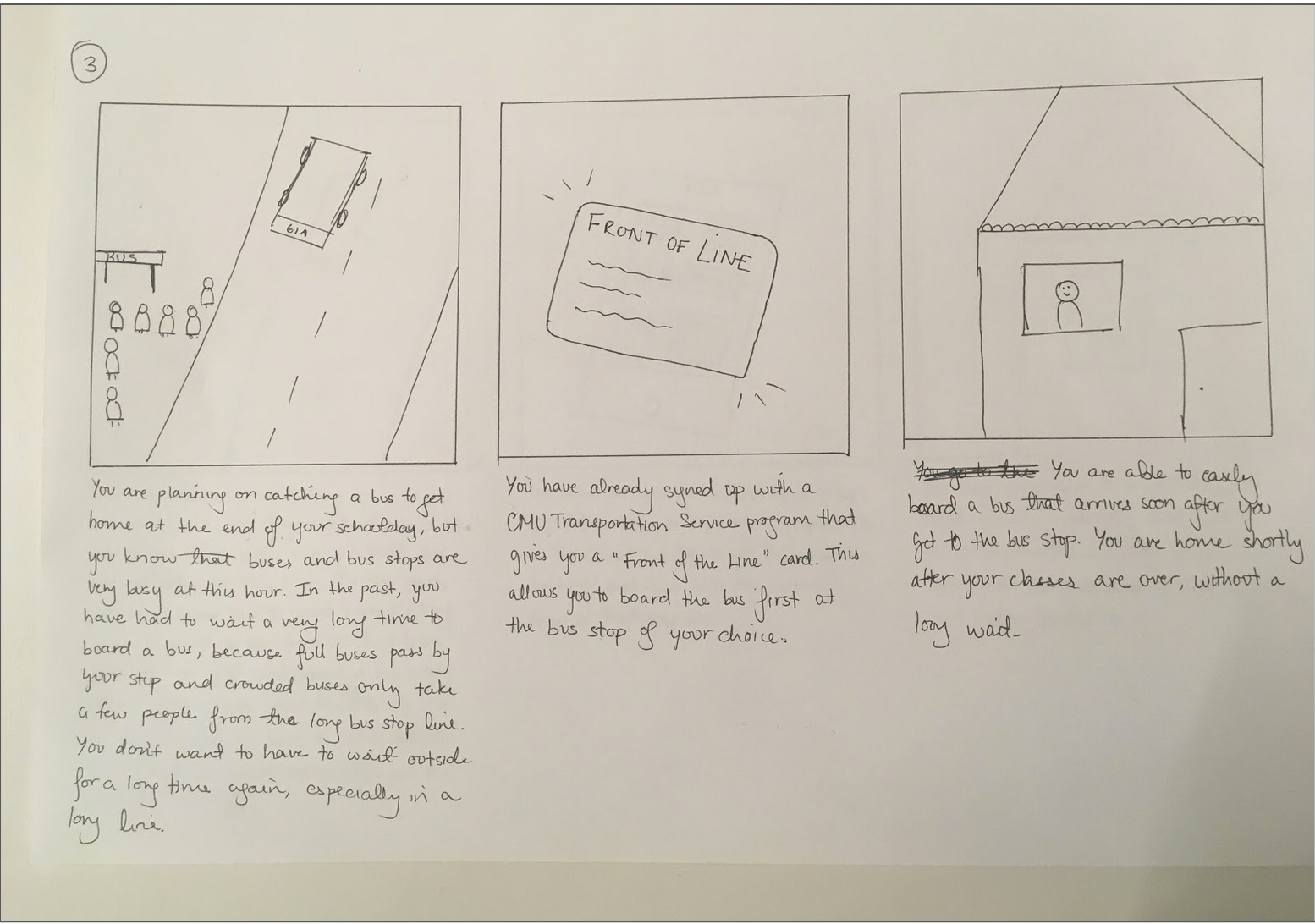
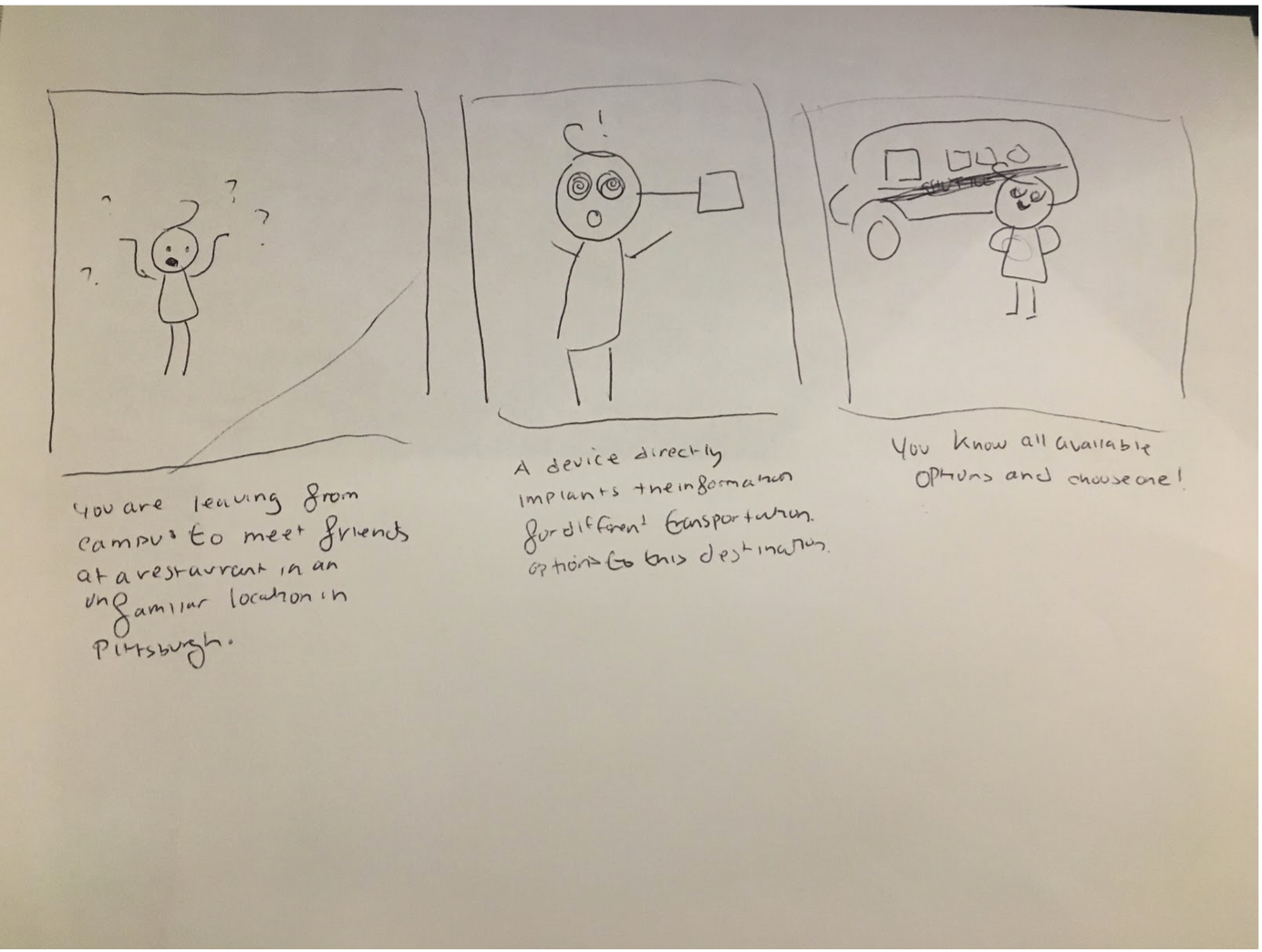
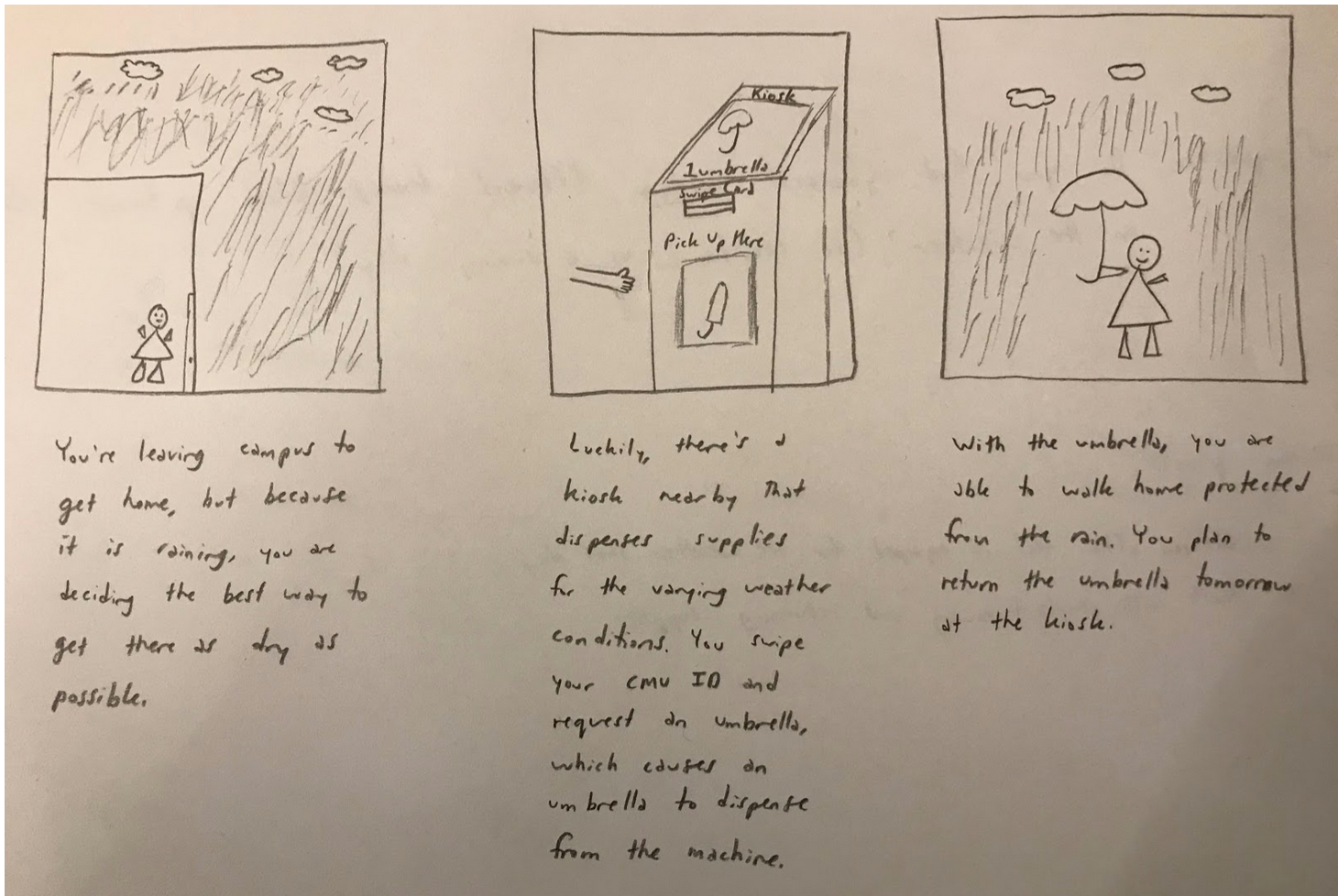
what ended up being our final solution!
5 Second Test
We then created an initial paper prototype and conducted several 5 second tests, where users were shown photos of the solution for just 5 seconds, and had to tell us what they remembered. Here are some more memorable quotes we got:
“If I ever forgot anything [I would use this], but would never use socks 'cause that's gross, also if i didn’t have to pay for it”
“Does it dispense items or show weather results? I'm confused about the purpose.”
“I would [use it], the weather here is not very good. I would definitely try to maybe use it.
“I wouldn’t take the time to see what it was unless someone told me about it”
We took these quotes and interpreted them into insights and design changes to implement in our next version of the prototype
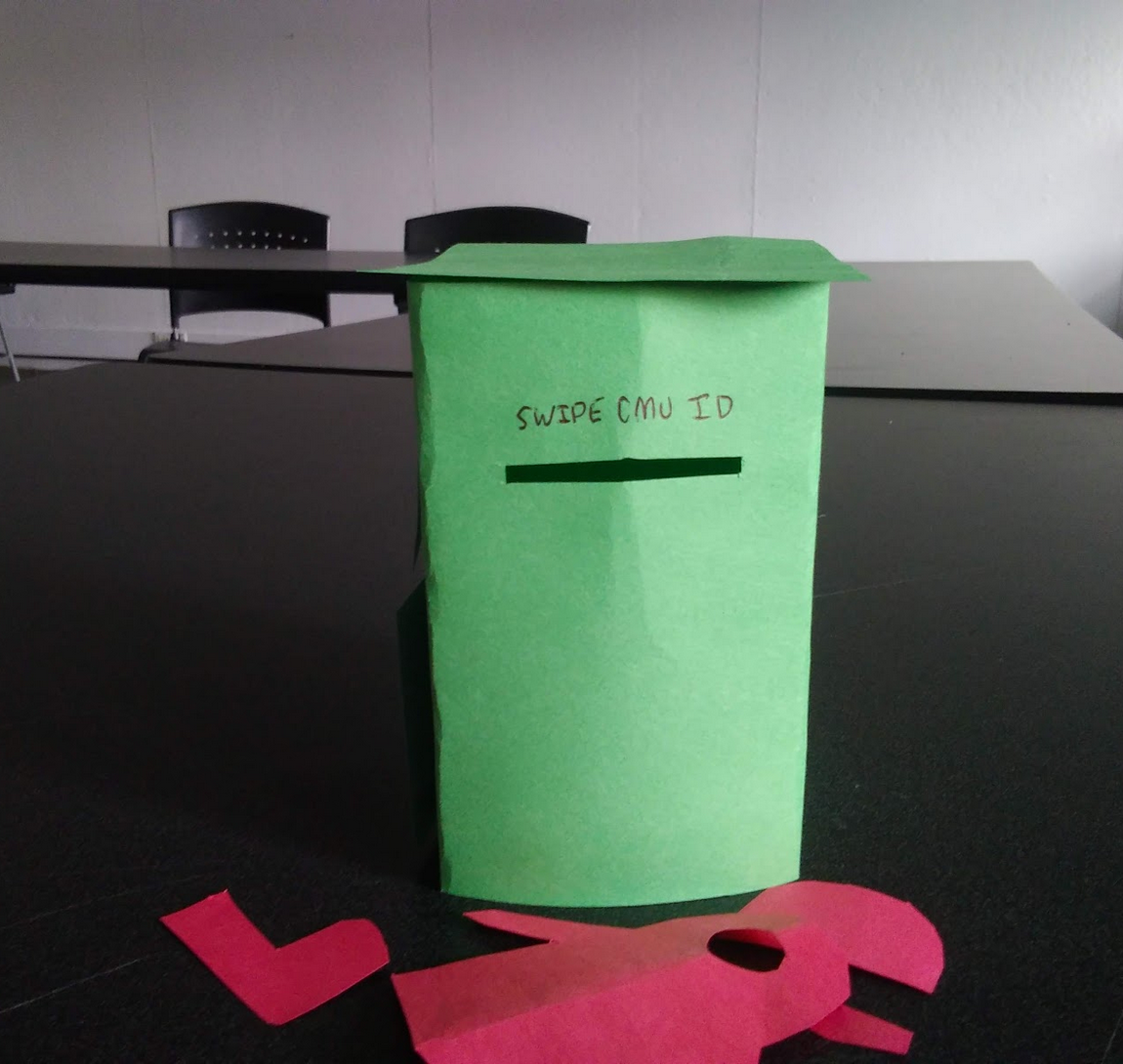
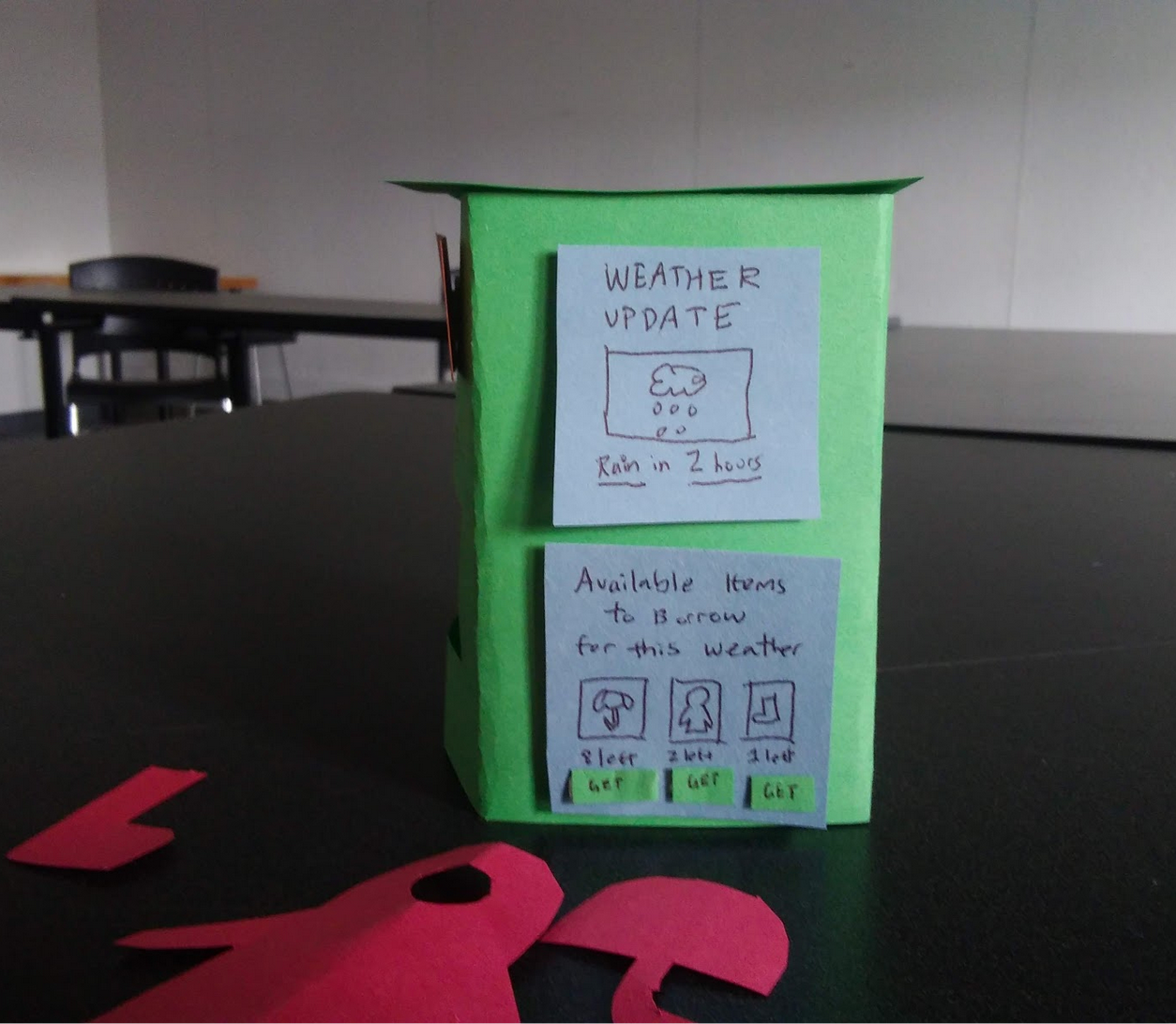
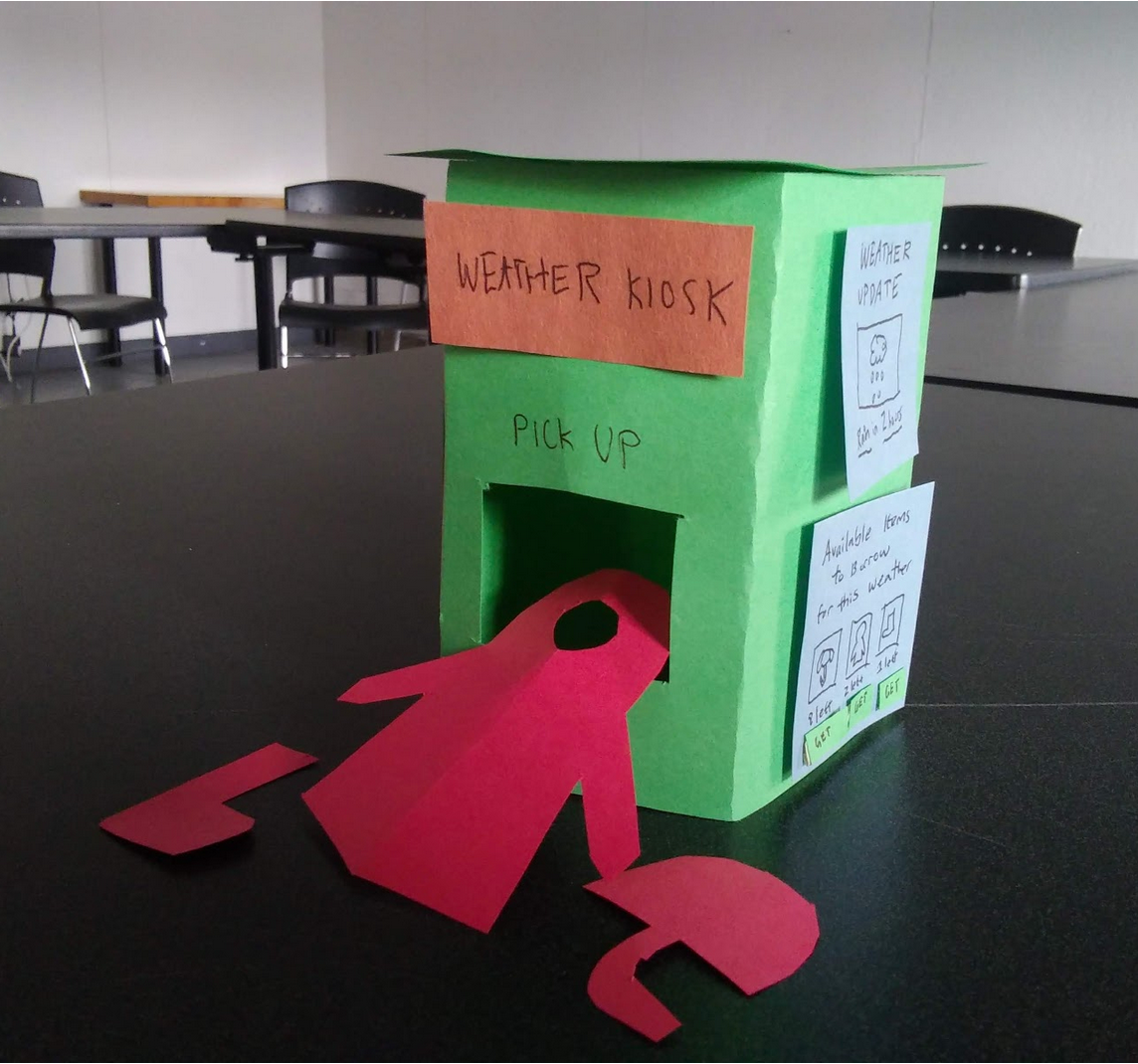
Experience Prototype
We decided to convert a vending machine into a make believe kiosk to see how users would interact with our kiosk. This test helped a lot, because there were many times that the user got stuck or confused, even thought the team thought it would be straightforward.
Things that we found out:
Users were most concerned about the returning policy/details as they want to know about the consequences.
Users didn’t know where to swipe their CMUid to get an umbrella, which is the trigger to start the whole process. This helped us realized we needed to clearly label things.
Users weren’t sure how to actually select an umbrella to retrieve, and we realized we didn’t have nudges to hint the user in the right direction
Final Design
From our research, we compiled 3 design principles to follow:
-Design should be accessible and affordable to students on campus and off campus to increase impact
-Information should easily get across to the users so they can make informed decisions on transportation quickly
-Flow of the start to end experience should be easy and intuitive
Our solution was able to comply with them by having 4 main features:
Umbrella borrowing system
Now when the unpredictable Pittsburgh rain hits, students will be better prepared. They no longer need to stress about forgetting their umbrella at home, and can be more focused on school.
Weather and time display
Students are constantly looking at their phone for this information, but having it on the kiosk will let them be aware of weather in advance of going outside, so they can plan ahead.
Drop off bins
Students are very concerned about getting fined and returning the umbrellas, so we implemented the idea of drop off bins throughout the campus, similar to how Bikeshares have multiple rack locations, so students could easily drop off the umbrella before heading to class.
Free and easy to access
We plan for it to be located in the University Center and the business building, which are both widely traversed areas on campus, so that students would easily see kiosks without having to actively search for them.
This project is just a stepping-stone to connecting students to vital information and services. The kiosks could grow to give other items, and the information screens could inform students on upcoming buses or shuttles using APIs.
Reflection
Our team never expected to design the solution we did have. We were so sure that we would design something related to the CMU shuttle system, since that’s where we personally felt the most pain, but it turns out students at large have other priorities to focus on.
This project was rough, we definitely had to spend 12 or more hours a week on the course in order to fulfill all the research that we did, but the end result was worth it. We also designed a poster and presented it to various HCI and CS staff about our findings during our showcase. The ability to have so much knowledge on such a niche domain is something that I found quite interesting. I had gone to CMU for three years and never appreciated the shuttle system, or the time it takes me to prepare for the weather in the way I do now.
This was a challenging project, but I also had amazing teammates who made our 5+ hour meetings breeze by. Shoutout to Mahima Arya, Hanna Jang, Sophia Qin (who also made most of the amazing graphics featured here), and Nupur Maheshwari. And before you go outside, check the weather!


